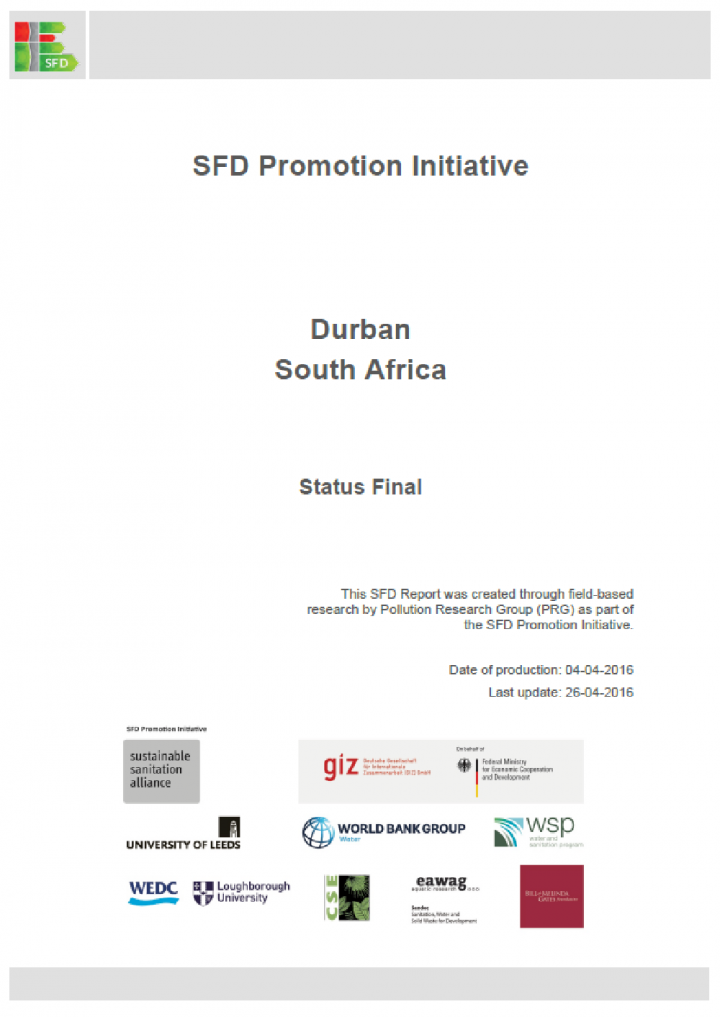
Published in: 2016
Pages: 66
Publisher:
Pollution Research Group (PRG), South Africa
Author:
Cross, X., Buckley, C.
Uploaded by:
SuSanA Admin
Partner profile:
common upload
7088 Views
652 Downloads
Location of library entry
Content - Summary
The city of Durban is managed by the eThekwini Municipality, which covers a wider area including 55% urban and 45% rural sectors. In 2015 the population was estimated from projections of the last census count in 2011 as being approximately 3.55 million people (eThekwini Municipality, 2015a). Most of the influx of people to the city accumulate in the peri-urban and rural areas due to more affordable land in the traditionally owned rural areas and due to the historical distorted urban planning arrangements from the Apartheid era (eThekwini Municipality, 2015b). In Durban, 74% of excreta is managed safely, with 48% coming from waterborne toilets on the central sewer network. The bulk of the excreta that is not safely managed is from the 17% of households that do not have improved toilet facilities or access to an emptying service (making up 16% unimproved, community-built pits that are not emptied or buried and 1% (open defecation) as well as the estimated overflow from blocked sewer lines.
Date of Production: 04/04/2016
Last update: 26/04/2016
Bibliographic information
Cross, X., Buckley, C. (2016). SFD Report - Durban, South Africa. Pollution Research Group (PRG), South Africa
Filter tags
English SFD Report Sub-Saharan Africa Urban (entire city)















